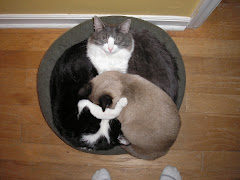No one talks much about their surveillance practices, do they? Sometimes it comes out when talking/writing about other things: about portfolios, for instance. Large-scale portfolio assessment is a good way of monitoring teachers, not just students. And some programs ask adjuncts to keep a teaching portfolio for "professional development." Both kinds of portfolios, while not primarily adopted as surveillance tools, can function in that way.
But there are all kinds of silent surveillances that are adopted primarily as surveillance mechanisms: monitoring of course syllabi, observation of classes, etc.
But these things aren't touted when programs trumpet themselves. Even so, the more programatic a program is, the more likely they are to have lots and lots of surveillance mechanisms in place. And the more hidden and silent they are, the less likely they are subjected to criticism and revision.
Hmm. How to get a sense of the surveillance practices in use at programs? A nation-wide survey? I've never been much for surveys. But maybe that's the only way to get at this?
CATEGORIES: research managerial
Subscribe to:
Post Comments (Atom)

No comments:
Post a Comment